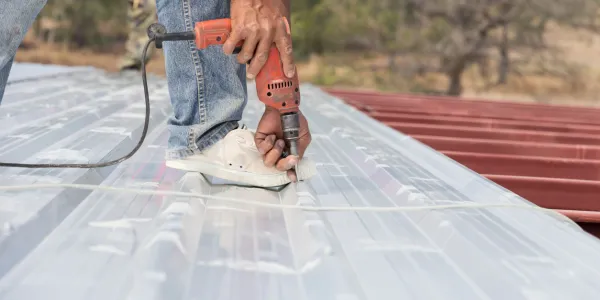Purchasing your first home is an exciting milestone, but it also comes with a list of responsibilities and decisions to make. One of the most critical aspects of homeownership is maintaining the integrity of your investment, and that starts with your roof. Roofing issues can lead to costly repairs, and choosing the right contractor to address these issues begins with understanding estimates.
Let’s delve into Roofing Estimates, discussing red flags to help first-time homebuyers distinguish between a good and bad contractor.
Roofing Estimates 101!
An estimate is a detailed document that outlines the scope of work required to repair or replace your roof. It should be provided by a licensed and reputable contractor. For first-time homebuyers, understanding the components of an estimate is crucial:
Scope of Work: A well-structured estimate should clearly define the scope of work. It should include details about the materials to be used, the timeline for completion, and any necessary permits or inspections.
Materials: A good estimate specifies the types and quality of materials to be used. Roofing materials vary widely in terms of durability and cost, so make sure you’re comfortable with the choices outlined in the estimate.
Labor Costs: Labor is a significant portion of any roofing project. The estimate should break down labor costs, including the number of workers and their hourly rates.
Additional Costs: It’s essential to be aware of any additional costs that may arise during the project. This could include unforeseen structural issues or necessary repairs not initially accounted for in the estimate.
Warranty: Reputable contractors often provide warranties for their work. Make sure the estimate includes details about the warranty, such as its duration and what it covers.
Red Flags in Roofing Estimates!
When reviewing roofing estimates, keep an eye out for red flags that could indicate a less-than-reputable contractor:
Vague Language: Beware of estimates filled with vague language. A good estimate should be specific and detailed, leaving no room for confusion.
Lowball Pricing: If an estimate seems too good to be true, it probably is. Lowball pricing might indicate that the contractor is cutting corners or using subpar materials.
Lack of Licensing and Insurance: Always verify that the contractor is licensed and adequately insured. Failure to do so could leave you liable for accidents or damage that occur during the project.
No Written Estimate: Never accept a verbal estimate. A professional contractor will always provide a written estimate that you can review and reference.
Pressure to Sign Quickly: Be wary of contractors who pressure you to sign the estimate quickly. Take the time to review multiple estimates and choose the one that best suits your needs and budget.
Insurance Roof Estimate
In some cases, your roofing issues may be covered by your homeowner’s insurance. When dealing with insurance roof estimates, follow these steps:
Contact Your Insurance Company: As soon as you notice a roofing problem, contact your insurance company to report the issue and initiate a claim.
Get Multiple Estimates: Just as with any roofing project, it’s wise to get multiple estimates from reputable contractors. These estimates will be used to determine the extent of the insurance coverage.
Coordinate with the Insurance Adjuster: Your insurance company will send an adjuster to assess the damage. Be present during this assessment and share the estimates you’ve received from contractors.
Review the Insurance Estimate: Once the insurance adjuster has completed their assessment, they will provide you with an estimate. Review it carefully and compare it to the estimates you received from contractors. If there are discrepancies, discuss them with your insurance company.
Choose a Contractor: After settling on a final estimate with your insurance company, choose a contractor who can complete the work within the approved budget. Ensure the contractor is willing to work with your insurance company for a smooth process.
Roofing estimates play a pivotal role in safeguarding your home and investment. First-time homebuyers must understand the components of a good estimate and be vigilant about red flags that could indicate an unreliable contractor. Remember that investing in a quality roof and a reputable contractor will provide long-term peace of mind for your home and its value.

